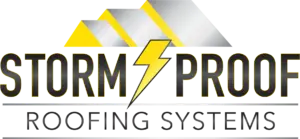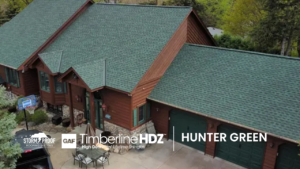Weathering the Storm: A Guide to Expertly Navigating Insurance Claims for Roof Damage
Introduction
In the face of natural disasters such as storms, one’s home becomes vulnerable to damage, particularly the roof. The roof serves as the first line of defense against the elements and shields us from rain, wind, and hail.
However, when a storm strikes and leaves its mark on your roof, it is crucial to take swift action to protect your investment and ensure your safety. Filing an insurance claim for storm damage to your roof is a vital step in recovering from such unfortunate events.
Doing so enables you to receive compensation from your insurer for the necessary repairs or replacements. This ensures that you can restore the structural integrity of your roof while safeguarding yourself against potential future consequences like leaks or compromised stability.
The Importance of Filing an Insurance Claim
Storm damage can range from missing shingles and cracked tiles to more severe issues like structural damage or water intrusion. Ignoring these problems or attempting makeshift repairs may lead to further deterioration over time.
By filing an insurance claim promptly after a storm has struck, you are taking proactive measures towards addressing these damages before they worsen. Moreover, filing a claim allows you access to financial support that can alleviate the financial burden associated with repairing or replacing your roof.
Insurance coverage varies depending on policy terms and conditions; however, many policies cover storm-related damages, including wind, hail, and water-related issues. By initiating a claim with accurate documentation and supporting evidence of damages caused by storms, you increase your chances of receiving fair compensation from your insurance provider.
An Overview of the Steps Involved
Filing an insurance claim for storm damage involves several key steps that ensure a smooth process:
- Assessing the Damage: After a storm passes through your area, it is essential to conduct a thorough inspection of your roof to identify any visible or hidden damages. Documenting these damages with detailed notes and photographs will provide evidence for your insurance claim.
- Reviewing Your Insurance Policy: Understanding the coverage types, policy limits, deductibles, and potential exclusions within your insurance policy is crucial. Familiarize yourself with the terms and conditions related to storm damage coverage to ensure you are adequately covered.
- Contacting Your Insurance Company: Once you have assessed the damage and reviewed your policy, promptly contact your insurance company’s claims department to initiate the claims process. Provide accurate details about the storm event and the resulting damages.
By following these steps, you can navigate through the process of filing an insurance claim for storm damage to your roof effectively. The rest of this article will delve into each step in detail, equipping you with the necessary knowledge and guidance to handle this often intricate process smoothly.
Understanding Your Insurance Policy
Explaining the coverage types related to storm damage
When it comes to filing an insurance claim for storm damage to your roof, it is crucial to have a clear understanding of the coverage types provided by your policy. Most homeowners’ insurance policies typically cover damages caused by wind, hail, and water. Wind damage refers to any harm inflicted on your roof due to severe windstorms or hurricanes, which may result in shingles being torn off or even structural issues.
Hail damage, on the other hand, occurs when hailstones strike your roof, causing dents, cracks, or even punctures. Additionally, water damage can be covered if it is a direct result of storm-related events such as heavy rainfall or excessive snowfall.
Reviewing policy limits and deductibles
To ensure you are fully aware of what your insurance policy covers regarding storm damage to your roof, carefully review the policy limits and deductibles associated with these specific types of claims. Policy limits refer to the maximum amount an insurer will pay in the event of a claim. It is essential to determine whether your policy limit adequately covers potential damages that may occur during severe storms.
Deductibles represent the portion of a claim that you are responsible for paying out of pocket before the insurance company starts covering expenses. Understanding your deductible amount is crucial as it determines how much you will need to contribute toward any repairs or replacements.
Identifying any exclusions or limitations specific to your policy
In addition to understanding what is covered in terms of storm damage, it is equally important to identify any exclusions or limitations that may apply specifically to your insurance policy. Exclusions refer to circumstances or situations where coverage does not apply—for instance, policies might exclude damages caused by certain natural disasters like floods or earthquakes unless additional coverage has been purchased separately.
Moreover, policies may also have limitations on the age or condition of your roof, which could impact the coverage provided. By carefully reviewing your policy documents, you can ascertain any potential gaps in coverage and take necessary measures to address them, such as purchasing additional insurance riders if needed.
Understanding your insurance policy is a crucial step towards effectively filing an insurance claim for storm damage to your roof. By comprehending the coverage types related to storm damage and reviewing policy limits and deductibles, you can ensure that you are adequately protected against potential financial losses.
Furthermore, identifying any exclusions or limitations specific to your policy allows you to be prepared for potential gaps in coverage and explore options for additional protection. Remember, being informed about your insurance policy empowers you as a homeowner when it comes to navigating the claims process smoothly and maximizing your reimbursement.
Assessing the Storm Damage
The Importance of a Thorough Inspection
After a storm, it is crucial to conduct a meticulous inspection of your roof to assess the extent of the damage. Keep in mind that even seemingly minor issues, if left unattended, can lead to significant problems over time.
Start by visually examining your roof from ground level, looking for any obvious signs of damage such as missing or dislodged shingles, bent or damaged flashing, or debris accumulation. However, it is essential to emphasize that conducting an inspection from the ground level alone may not provide a comprehensive evaluation of potential damages.
Documenting Visible Damages with Precision
Once you have completed your initial visual inspection and identified potential areas of concern, it’s time to document the visible damages with utmost precision. This step involves taking detailed photographs and making thorough notes about each observed issue.
Ensure that you capture close-up shots that clearly depict any visible signs of damage such as cracks, dents, or water stains. Your photographs should also include wider shots that provide context by showing the overall condition and layout of your roof.
In addition to photographs, take written notes describing each specific area where damage is evident and detail its characteristics (e.g., size, location). By documenting everything meticulously at this stage, you will have solid evidence supporting your insurance claim later on.
Identifying Potential Hidden Damages
While visible damages are important to address, it is equally essential to keep an eye out for potential hidden damages that may require professional assessment. Not all storm-related issues are immediately apparent; some problems might be concealed beneath the surface or within more intricate roofing components.
To identify potential hidden damages accurately, consider consulting with a professional roofing contractor who specializes in storm damage assessment. They possess the expertise and experience necessary to detect underlying issues that may not be apparent to an untrained eye.
Hidden damages can include compromised structural integrity, water infiltration, or weakened support systems. Investing in a professional inspection will ensure that all damages are identified and properly addressed during the claims process.
Remember, thorough assessment and documentation of both visible and potential hidden damages are vital for a successful insurance claim. By being diligent in this crucial step, you will have a strong foundation for moving forward with the claims process and obtaining the necessary funds to restore your roof to its pre-storm condition.
Gathering Necessary Documentation
Collecting copies of your insurance policy, including declarations page and endorsements
To effectively file an insurance claim for storm damage to your roof, it is crucial to gather all relevant documentation pertaining to your policy. Begin by acquiring copies of your insurance policy, ensuring that you have both the declarations page and any endorsements or addendums associated with it. The declarations page provides an overview of the coverage you hold, including the types of perils insured against and the limits set for each.
Endorsements, on the other hand, modify or add specific provisions to your policy. By having a comprehensive understanding of these documents, you can accurately assess what damages may be covered under your plan.
Obtaining copies of any previous inspection reports or maintenance records for your roof
In order to strengthen your insurance claim and demonstrate the pre-existing condition of your roof prior to storm damage, obtaining copies of any previous inspection reports or maintenance records is essential. This documentation serves as evidence that showcases the condition and integrity of your roof before the storm event occurred. It is particularly valuable if there were no significant issues reported during these assessments as it reinforces that the damages observed post-storm are a result of the recent natural disaster rather than pre-existing wear and tear.
Organizing receipts for any temporary repairs or mitigation measures taken post-storm
Following a storm that has caused damage to your roof, it is often necessary to undertake immediate temporary repairs or mitigation measures in order to prevent further harm to your property. It is crucial to keep detailed records and retain receipts for all expenses incurred during this process. These receipts will serve as evidence when submitting expenses related to temporary repairs such as tarp installation or emergency patching.
Additionally, if you had engaged professionals such as contractors or restoration companies for mitigation purposes (such as water extraction), ensure you collect their invoices and receipts as well. These records will contribute to your claim by demonstrating the steps taken to prevent further damage and maintain the security of your property.
By gathering these essential documents, including copies of your insurance policy, previous inspection reports or maintenance records for your roof, and receipts for any temporary repairs or mitigation measures taken post-storm, you will be equipped with a strong foundation to support your insurance claim. Remember that thorough documentation enhances the legitimacy of your claim and increases the likelihood of receiving appropriate compensation for storm damage to your roof.
Contacting Your Insurance Company
Locating the contact information for your insurance company’s claims department
When it comes to filing an insurance claim for storm damage to your roof, the first step is to locate the contact information for your insurance company’s claims department. This information can typically be found on your insurance policy declaration page or by contacting your agent directly. It is essential to have this information readily available, as prompt communication with your insurer is crucial in initiating the claims process efficiently.
Notifying them promptly about the storm damage to initiate the claims process
Once you have obtained the necessary contact details, it is imperative to notify your insurance company promptly about the storm damage. Time is of the essence when it comes to filing a claim, as many policies have specific time limits within which you must report damages.
Failing to provide timely notification may result in complications or even denial of coverage. Be prepared to provide details about when and where the storm occurred, including any relevant documentation such as weather reports or news articles.
Providing accurate details about the date, time, and nature of the storm event
When contacting your insurance company, ensure that you provide accurate and detailed information regarding the date, time, and nature of the storm event that caused damage to your roof. Precise documentation will help expedite their investigation process and enable them to assess whether coverage applies based on policy terms and conditions.
Be honest and transparent in providing all relevant facts related to how and when the damage occurred.
Meeting with Your Insurance Adjuster
Once you have notified your insurance company about the storm damage and initiated a claim, a meeting with an assigned insurance adjuster will be scheduled. This meeting serves as an opportunity for both parties involved—insured homeowner and adjuster—to assess damages firsthand.
During this meeting, the insurance adjuster will inspect your roof and evaluate the extent of the storm damage. They will document their findings, take photographs, and may ask you questions regarding any prior repairs or maintenance performed on the roof.
It is crucial to be present during this inspection to ensure that all visible damages are properly recorded. In case there are hidden damages that require professional assessment (such as water leaks), it is essential to inform the adjuster so they can include them in their evaluation.
After reviewing your insurance policy and assessing the damages, the adjuster will provide you with a detailed estimate of repair costs based on their findings. It is important to review this estimate carefully, ensuring that it covers all necessary repairs and aligns with your expectations.
If there are any discrepancies or concerns, discuss them with the adjuster promptly to reach an agreeable resolution.
Conclusion
Filing an insurance claim for storm damage to your roof requires prompt action and accurate communication with your insurance company. Remember to locate the contact information for your insurer’s claims department and notify them promptly about the storm damage. Provide detailed information about when and how the damage occurred, including relevant documentation if available.
Once you have initiated a claim, a meeting with an insurance adjuster will be scheduled for assessing the damages firsthand. Be present during this inspection and ensure that all visible damages are properly documented.
Review the estimated repair costs provided by the adjuster carefully, addressing any concerns or discrepancies. While filing an insurance claim may seem daunting, remember that insurers are there to assist you in times of need.
By following these steps diligently and providing accurate information throughout the process, you increase your chances of obtaining fair compensation for storm damage to your roof. Stay positive throughout this journey knowing that help is available when nature unleashes its fury upon us!




